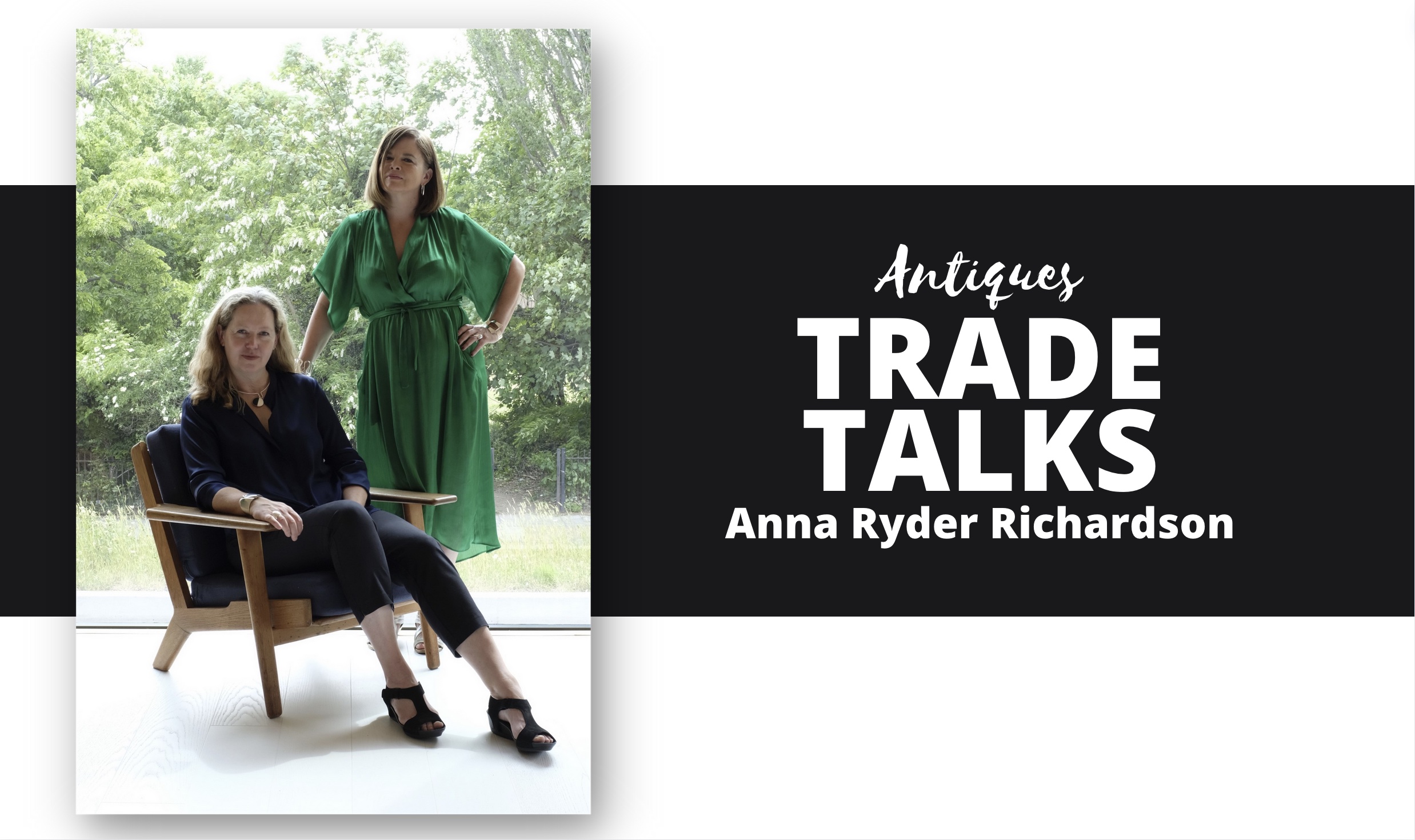#Antiques #Trade #Talks #Lucy #Ryder #Richardson #Antique #Collecting
 The Midcentury Modern® fair was established in 2002 by former fashion and TV journalist Lucy Ryder Richardson and avid photographer and garden designer Petra Curtis. Midcentury Modern® Dulwich still takes place twice a year in March and November attracting 85 dealers and British contemporary designers and thousands of visitors, designers, architects, and collectors, alongside Hollywood celebrities including Jason Statham, Olivia Colman, Stephen Merchant and Andrew Garfield. The pair also has a vast archive of midcentury and antiques they hire out and stage with, working on properties for developers, architects and sellers through The Modern House and Inigo as well as selling pieces off privately behind the scenes. Find out more at @midcentury_modern on Instagram, where you can also find Lucy at @midmodmadam and @thebluehousehastings. Petra can be found at @picklemyvintage and their staging business at @property_staging, both on instagram. The first 2024 fair takes place on March 24, followed by November 17. Find out more at www.modernshows.com and modernshowspropertystaging.com.
The Midcentury Modern® fair was established in 2002 by former fashion and TV journalist Lucy Ryder Richardson and avid photographer and garden designer Petra Curtis. Midcentury Modern® Dulwich still takes place twice a year in March and November attracting 85 dealers and British contemporary designers and thousands of visitors, designers, architects, and collectors, alongside Hollywood celebrities including Jason Statham, Olivia Colman, Stephen Merchant and Andrew Garfield. The pair also has a vast archive of midcentury and antiques they hire out and stage with, working on properties for developers, architects and sellers through The Modern House and Inigo as well as selling pieces off privately behind the scenes. Find out more at @midcentury_modern on Instagram, where you can also find Lucy at @midmodmadam and @thebluehousehastings. Petra can be found at @picklemyvintage and their staging business at @property_staging, both on instagram. The first 2024 fair takes place on March 24, followed by November 17. Find out more at www.modernshows.com and modernshowspropertystaging.com.
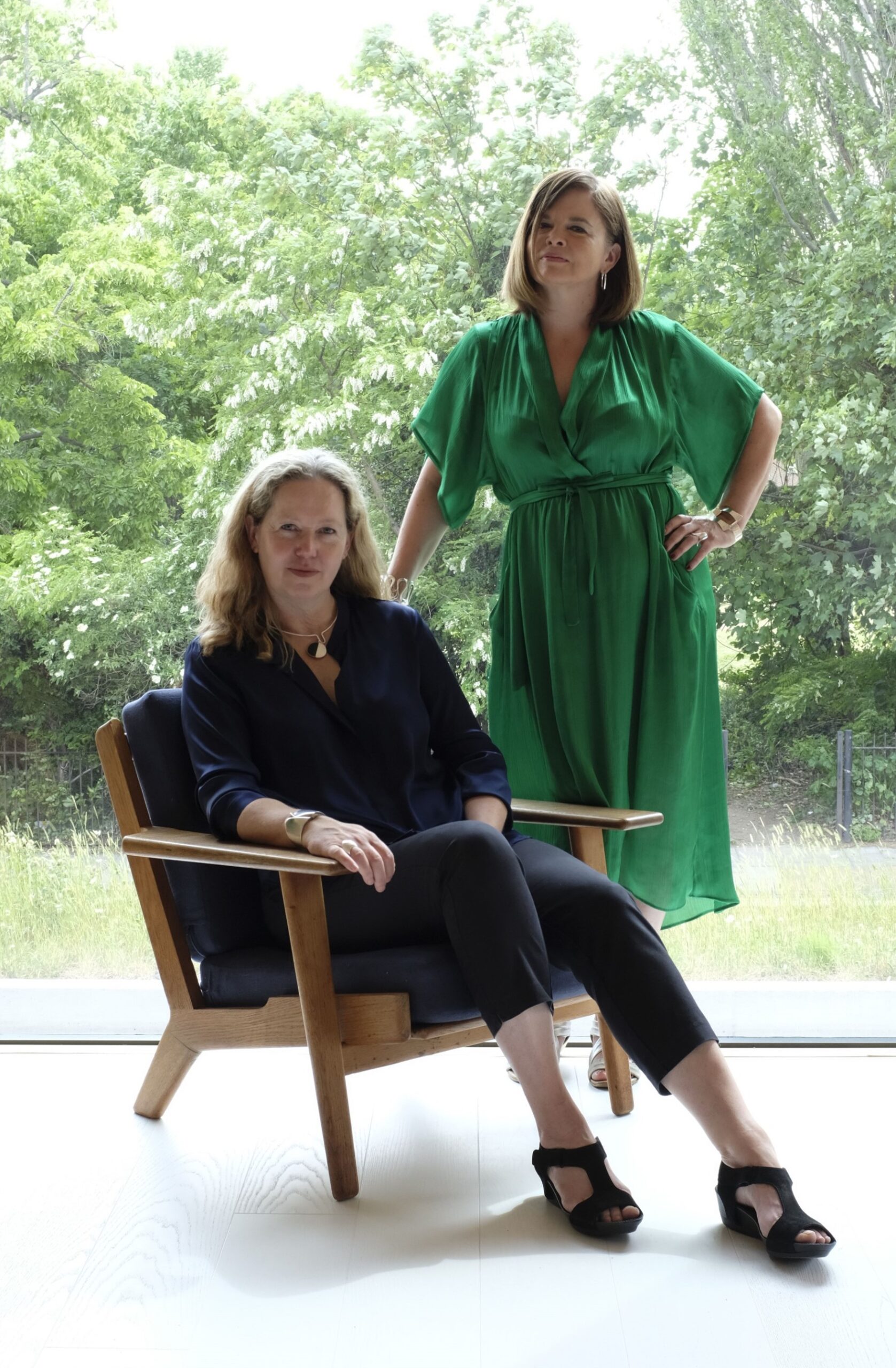
What is the unique appeal of antiques and vintage?
People are looking more and more for ‘talking pieces’ for their homes, items that tell a story, that have a patina, that evoke emotion. We are seeing a huge move now by the mainstream towards sustainability. No-one wants pieces destined for landfill and we are getting fed up with badly made furniture that snaps and chips so easily or that we have to put together ourselves. We cannot afford the high prices that designers need to command to create furniture that is crafted beautifully by hand or digital printer and not mass-produced. Most antique and vintage in great condition already has a record of lasting for years and can there are prices to suit all purses. It is also fun to spend days out sourcing them. Boutique hotels and Air B&Bs have surfed on this wave by dressing their properties with a mix of antique and modern and it is very comforting to me to see stunning pieces utilised in new ways as storage beneath bathroom sinks or repurposed as kitchen cabinets rather than being thrown away where not practicable for modern lives. A friend of mine recently used the shell of an old record player from the 1920s under a bathroom sink.
What areas or items are currently selling well?
Anything with a wabi wabi or rustic feel is still doing well. Hand-turned items get snapped up. Pieces with a crafts, handmade feel. Art is as always very buoyant. Limited edition abstract prints especially. Also, I think anything people can put through the ‘home office’ is bound to sell well. Storage and small desk and shelving items plus accent chairs. Everyone needs wardrobes if you are happy to deliver free locally. Dressing tables, desks and tallboy chests of drawers are popular. Having done this for twenty years I would say if you have enough storage space fill it up with beautifully made pieces from designers you admire that are not on trend and wait for them to become fashionable again. You might hit gold like the controversial French collector and dealer Eric Touchelaume did with Pierre Jeanneret in Chandigarh and Jean Prouve in the Congo. Although he did buy all the stock, put on an exhibition, write a book and then drip-feed the furniture at high prices back into the market to get good returns.
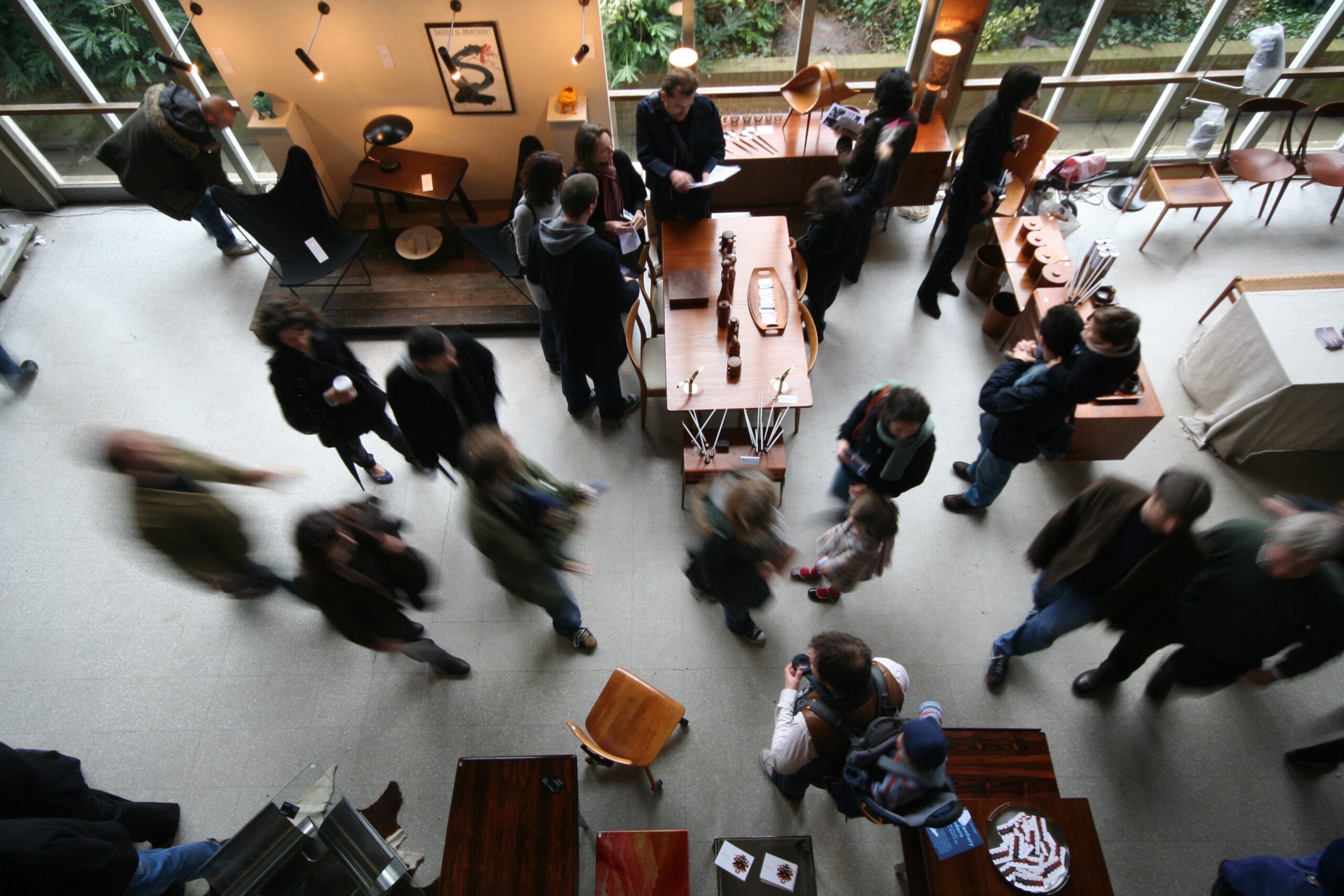
Which are the ones to watch or future sellers?
Dealers who understand how interior designers think are the ones to watch and those that have enough to go big on buying, buying up storage space as they go. Sauce is owned by a young couple whose business has soared for their love of South of France early 20th century (I believe they now have a house there, too) and Beton Brut’s Sophie is a dealer I hugely respect for her love of furniture and lighting with a sculptural bent although she has people in the South of France and Italy who source for her on the whole and concentrates her own sourcing here. Both do our fairs. Back home (I now live in the wonderful town of Hastings) Vicky and Lee from Sideshow Interiors have fantastic taste, immaculate stock and warehousing in Palm Springs and Hastings.
What antiques and vintage do you have at home or collect?
I like to mix Danish midcentury with talking pieces from all eras. I love arts and crafts, Georgian and often throw oriental pieces in, too, until I sell them. I collect Finnish designer Tapio Wirkkala’s black Rosenthal ceramics – he was the designer’s designer. What I especially love about him was he would take time out from the design shows and his family to immerse himself in nature. He had a small wooden house in the Sami area of Lapland and would sit for hours and hours with his pipe and a sketchbook or his knife and a piece of wood creating his designs as icicles dripped slowly and long-beaked birds paddled silently past him. I also collect Jean Austrey’s black and white French lava ceramics. I love John and Sylvia Reid Stag for storage as they made things so well. I’m also a bit of an Eric Buck and Jens Quistgaard fan. My kitchen is spilling over with Quistgaard’s beautiful cutting boards, teak ice bucket and enamel pieces. I would love to collect more but there is only so much space and you have to be careful not to become a hoarder. Antiques and vintage is hugely addictive and always very easy to buy but not always so easy to sell.
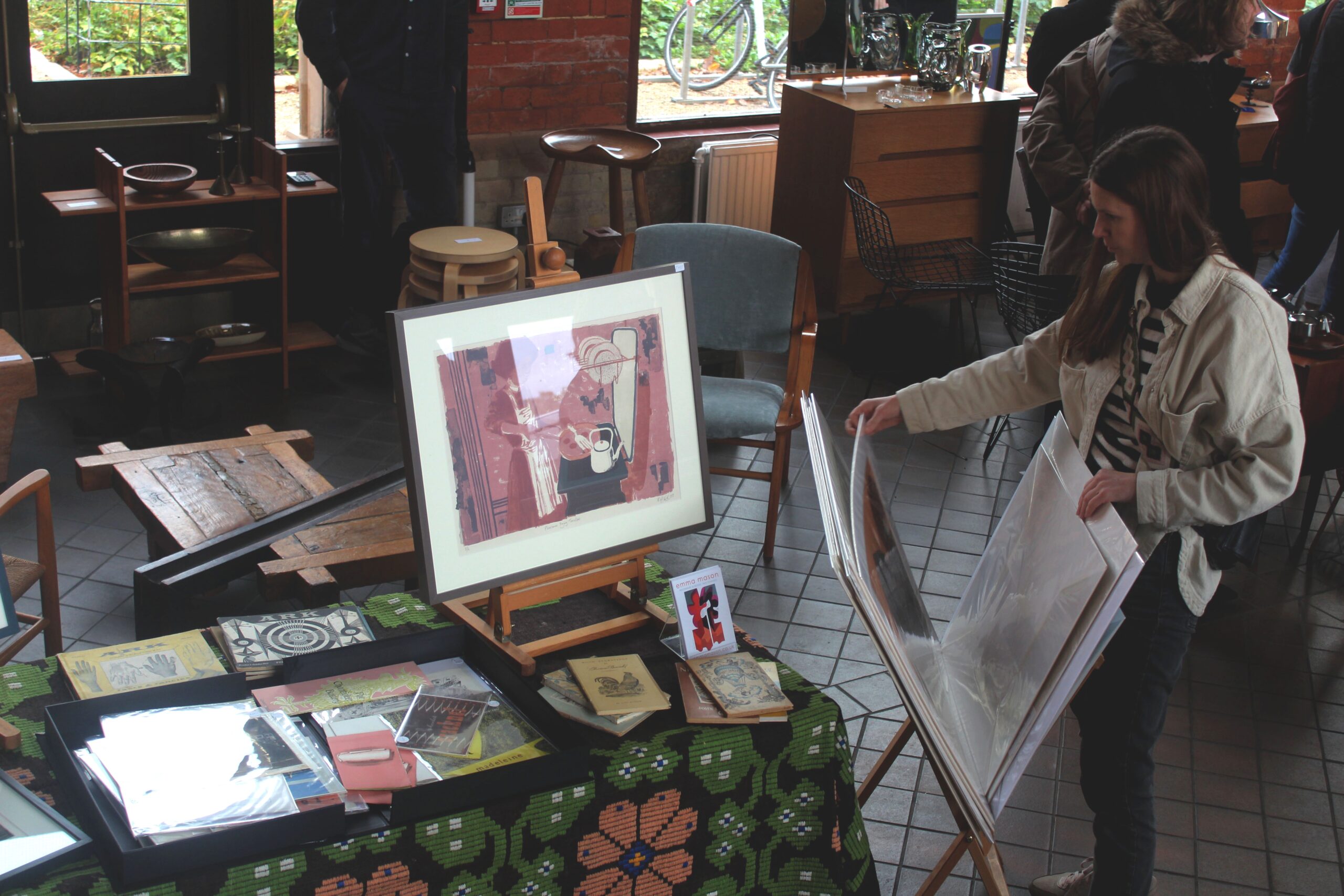
What do you think will be the antiques and vintage of the future?
Im a big fan of Yukihoro Akama who makes miniature houses out of native British wood. I love ceramicist Halima Casell right now and the organic furniture of Elissa la Coste that looks like it has sprung from a neolithic cave. I did collect the glass of Lena Bergstrom until my cat broke a valuable giant teardrop. Michael Young’s huge polypropylene Sticklight or icycle lights for Tom Dixon. Early pieces by Tom Dixon and Matthew Hilton are becoming more and more collectable. Piet Hein is definitely a future antique. Were I to collect more modern I would go for the bigger more expensive pieces at the time that are less likely to be reproduced again and again.
How is the industry changing and are you optimistic for its future?
Brexit was so tough on the dealers but they have carved their way through it admirably and some people have even created new jobs out of it. A few dealers now do all the stock-takes at customs and take some of the hard work away from dealers who, without them, would have to sign every form for each product going through customs. Costs have gone up because, as you know, every item coming into the UK has duty added to it now but unfortunately with people not having the money to spend like they used to this has not been reflected in what is paid for when it comes to pieces at our shows. Customers still haggle voraciously. Our fairs are still really well attended and have been better attended post-Covid than before so, yes, while everyone is caring about a sustainable world, vintage and antiques will be popular. I am very optimistic. I’m also impressed when our customers make an effort to find out exactly how a piece is made and where it is from and how much fuel it will take to get that piece to their door.
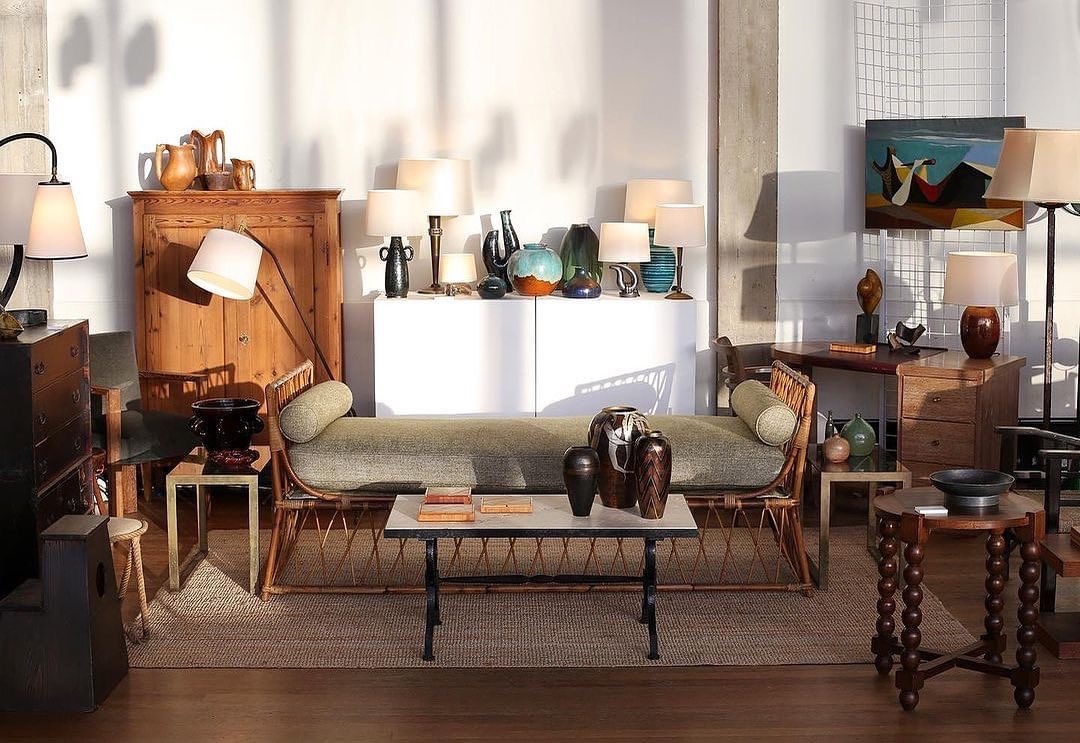
Is new technology good for the trade and buyers/collectors?
Yes, it kept most of our dealers afloat during Covid and Instagram and TikTok are making stars of us all as we bring in viewers. Many of the dealers who had shops have been able to close them as their instagram accounts do so well but they still need the fairs so that people can get a feel for their style live a few times a year. Many of the dealers at our show are on the TV these days. I even do a stint on the French Vintage Farmhouse and The Bidding Room (series 5 currently showing), although I sacked myself from The Bidding Room last week as I have so much to do on my new house and need more time to do pop-ups in Hastings. The producers very kindly left the door open for me which I thought was very generous after I turned them down.
Tell us some trade secrets?
I think I can say safely say good storage is essential and make sure it is well ventilated and the right temperature for your stock. A good dealer should know everything about the designers he or she stocks and will buy the early catalogues from the antiques houses and Heals whenever they pop up on eBay. Dealers use Google Lens to check some pieces, although, be warned, there are some great copies out there. Dealers get storage where they source pieces so if your biggest place to shop for stock is just outside Copenhagen, find cheap storage there.
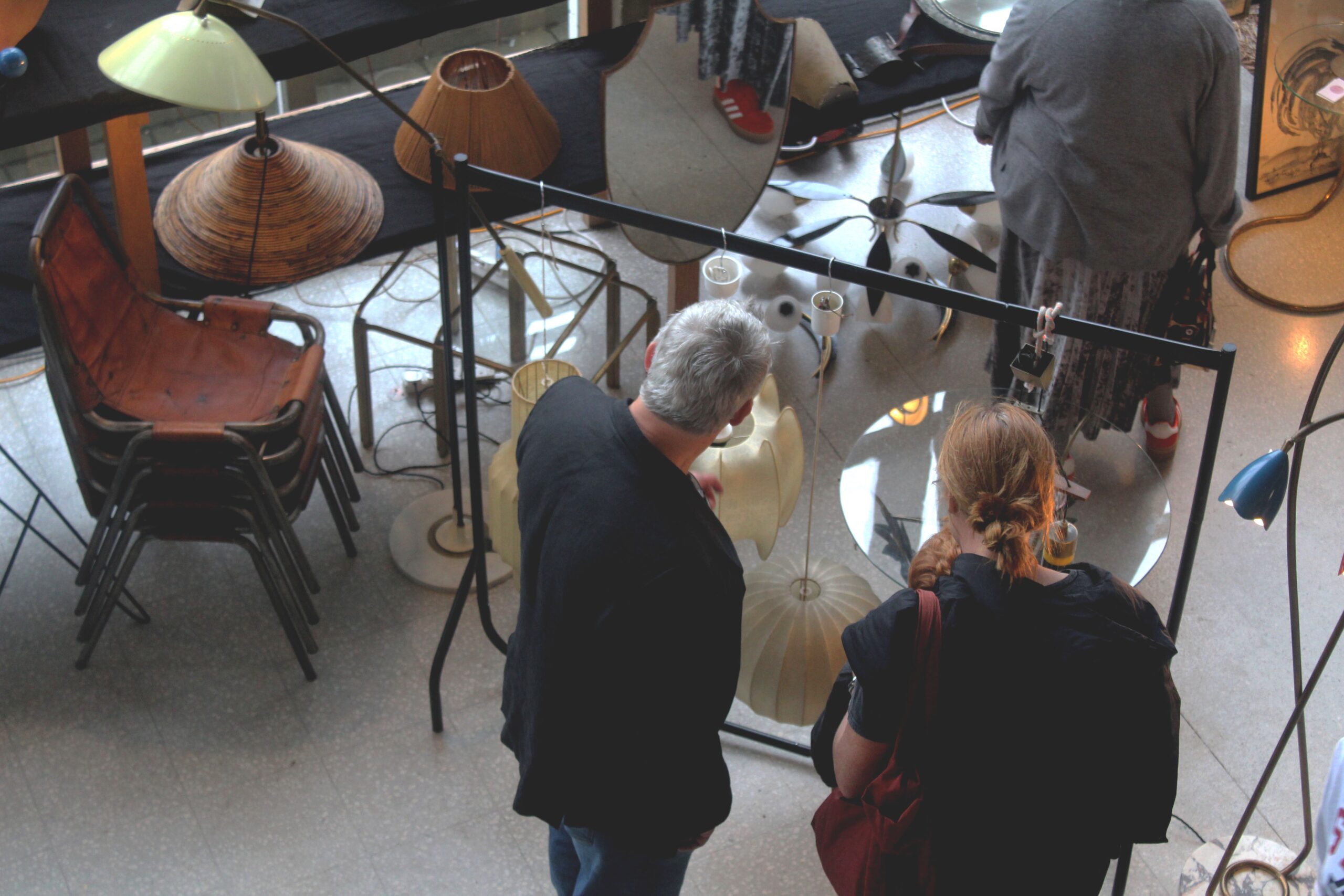
What antiques and vintage would you buy if money were no object?
What I buy totally depends on what I need at the time or what I think would be good for staging or an easy sell so this is a difficult one to answer as I’m not someone who LUSTS after objects I cannot own or that would be impractical in my house. I’m more of a foster parent looking after things for a while and letting them move on. I would love to own some of Harry Bertoia’s early sound sculptures and rare pieces by isamu Noguchi as they would work with my life as someone who not only works in midcentury and antiques but also meditates and puts on breathwork classes – but ask me that again if I ever get rich :).
You’re down to your last 50 quid – what antiques and vintage would you buy?
I wouldn’t buy an antique if I was down to my last £50. I’d buy food for my kids or a present for our brilliant staff member Tanya Pateman who has been with us for years.
Ok, let’s put it another way: what would you buy if you were down to your last £50 of your stock budget?
The best things I find to buy on a small budget are studio ceramics. They are great as decorative pieces, can be hired out again and again if bubble-wrapped carefully between stagings, and are very cheap online. Were I needing to sell instantly I would buy anything that was in a group that had a story and I could sell off singly if it didn’t ruin the story, although that’s a bit dull. I think whatever I could find that day that made my heart sing, as I can always use it for hire for a while before selling it to make the money back on the object. I am lucky that I don’t have to turn a profit instantly.
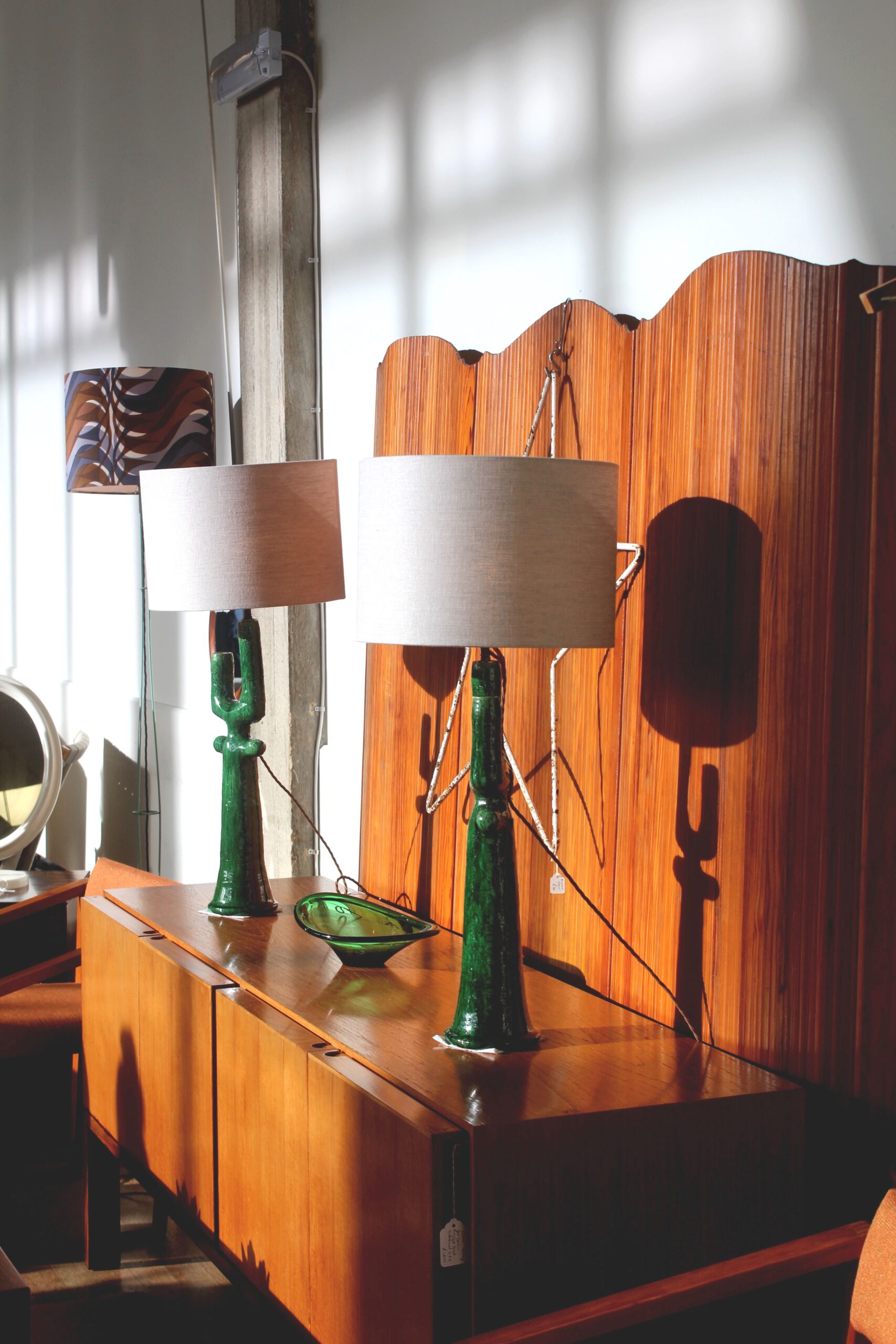
Alongside your fairs, where are your favourite antique and vintage hunting destinations?
I love going shopping in small towns more than going to big trade fairs. You get to see how the retailers present in situ and they tend to have a bit more time to chat, plus you get the experience of seeing the town and its sights, too. Ross on Wye, Rye, Hastings and St Leonards are favourites. Bexhill is great and I love visiting the De La Warr. I love the Battersea Decorative but it is a bit bigger than my budget. Danish warehouses and car boots are always fun.
What are some of the biggest mistakes that buyers make?
Know the logos and brand marks. No logo or brand mark and you could be looking at a good fake and, believe me, there were fakes made in the midcentury as well as today, as much as you would love to believe it could be the prototype. There is a fake HANS WEGNER folding chair in a museum according to Marianne Wegner, Hans Wegner’s daughter, who told me the story for my book 100 Midcentury Chairs (and their stories). Ask about the production date of that exact piece as it could be a late production. You want the earliest production you can afford, unless it is a limited edition brought out in a ‘birthday’ year. Ask for provenance. Get it all written down on the receipt and tuck that receipt into the piece or file it away so you never lose it. Provenance adds profit to a piece. Good furniture should come with certificates of authenticity like art does.
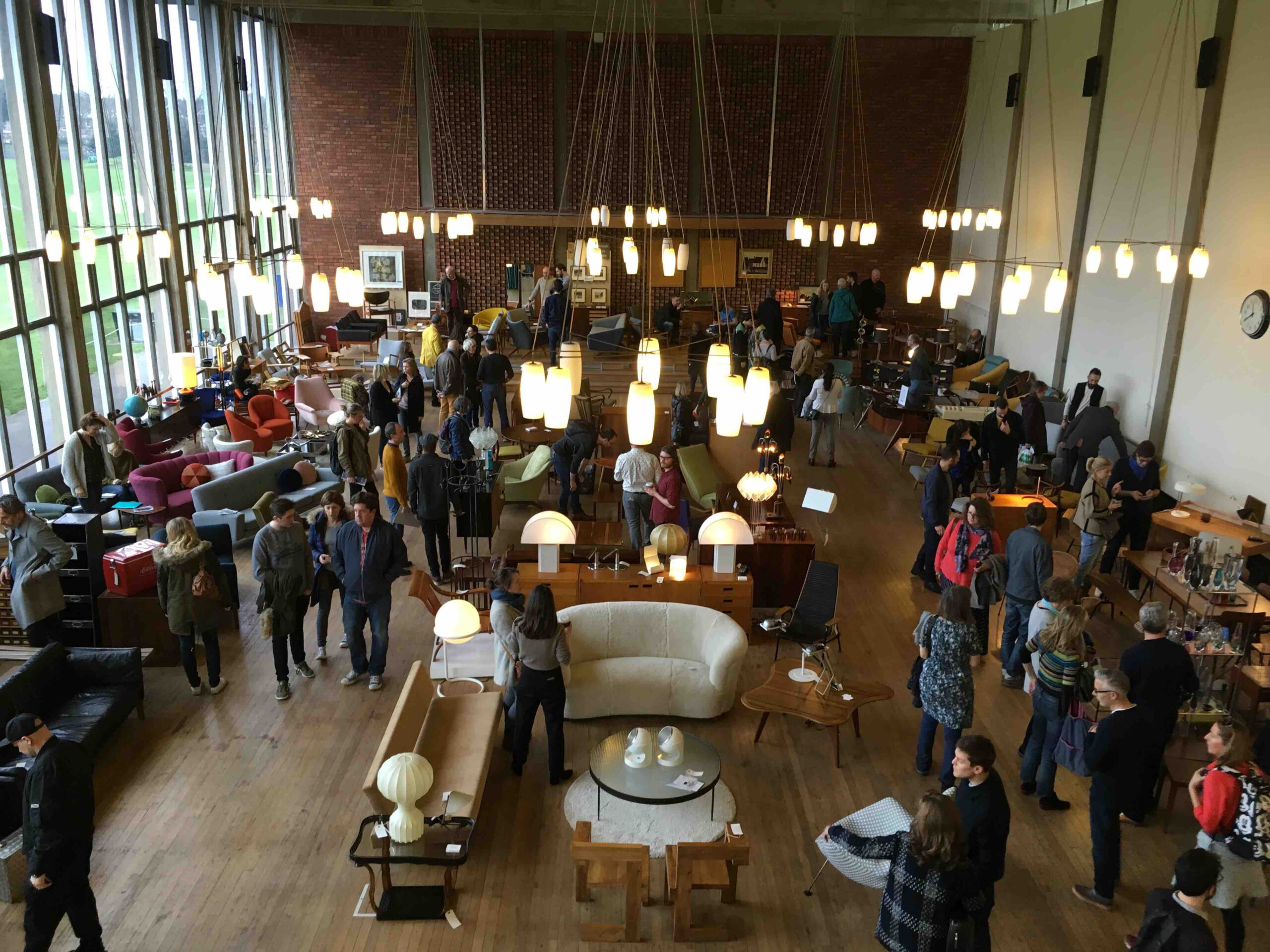
What do you consider the high point of your career thus far?
Being thrown a party and given a shop window by Skandium. Being recommended for TV by Jay Blades of The Repair Shop. Surviving Covid – it’s all been a high (except the Covid years). Bringing up kids while creating another baby (your business) is definitely something to be proud of.
What advice would you give to people new to antiques & vintage wanting to learn more?
Read up about all your favourite designers. Know more than Google can tell you. Talk to dealers. Work for dealers or in auction houses for a bit no matter what they pay you. Ask questions. Go back to books and catalogues. Find the original instructions that came with the piece if it is a knock-down item and when you come to sell it, sell it with all the information, “its story”, if you want to get a really good price for it. Be authentic. Discover YOUR style and stick to it. Don’t copy others. Come to our fair on Sunday 24th March and talk to the dealers! They will be happy to ask questions when they have time about designers and the pieces that have on display. If you want to sell midcentury buy my book 100 Midcentury Chairs and their Stories, which I have been told is fun to look through, has since come in handy for identification purposes, and has helped people to recognise chairs when out and about at fairs like Ardingly.
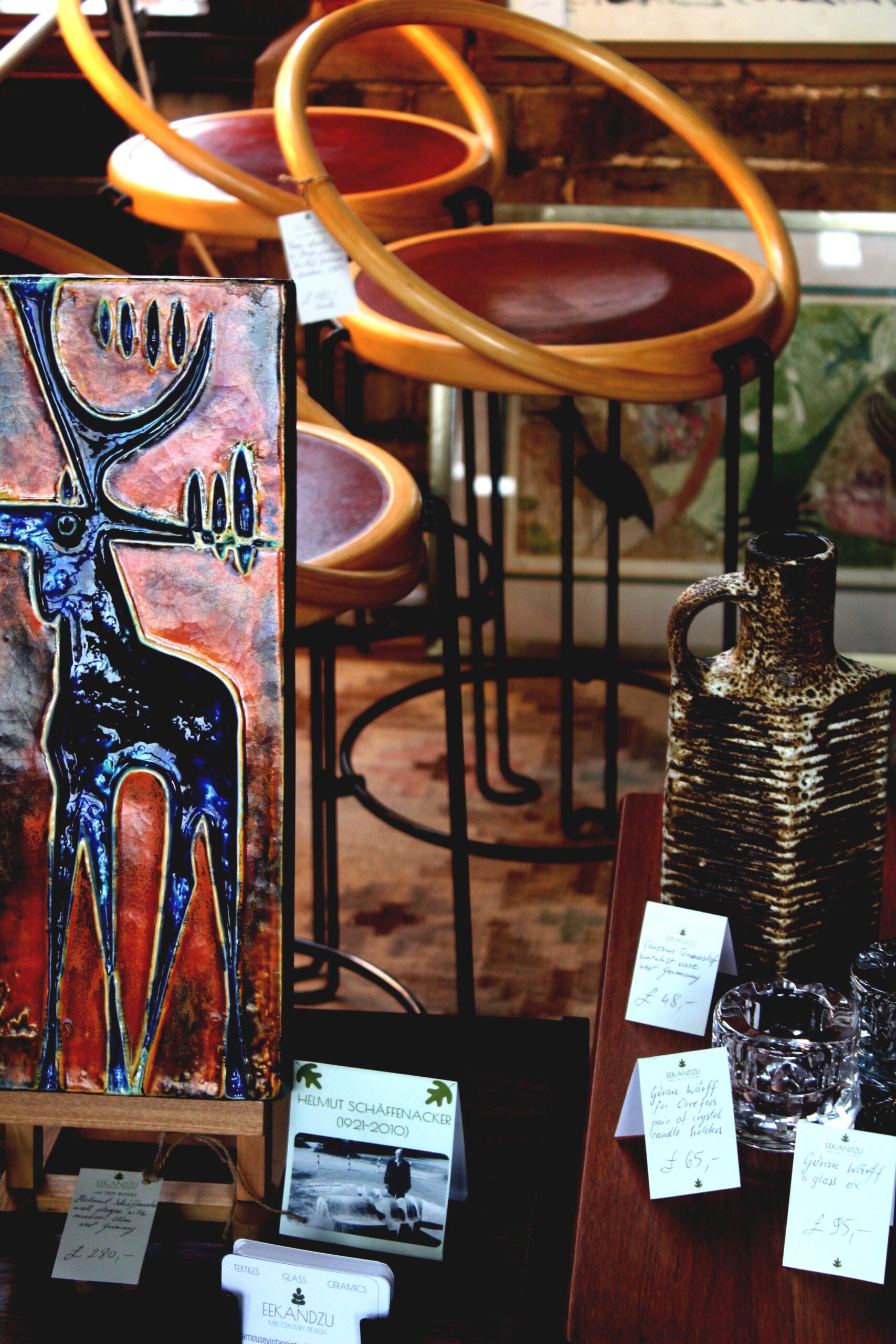
What did you do during Covid?
Our events were shut down, so Petra did a very good garden design course and is now certified to do that in addition to her work with Modern Shows®. I studied to become a Breathwork practitioner for nine months and am now a certified practitioner with the top school in Europe. Having meditated for 30 years, breathwork is the only form of meditation I have ever felt I wanted to facilitate as your breath is such a good tool and you can carry it everywhere. I saw what was happening with Covid and wanted to be able to help people with long Covid, PTSD and stress. The type I teach is what they called ‘Rebirthing in the Seventies’ and can be quite hallucinogenic as it taps into your vagus nerve and pineal gland. With the world the way it is currently, breathwork is much-needed ‘medicine’. Find me at @breathlady on instagram

